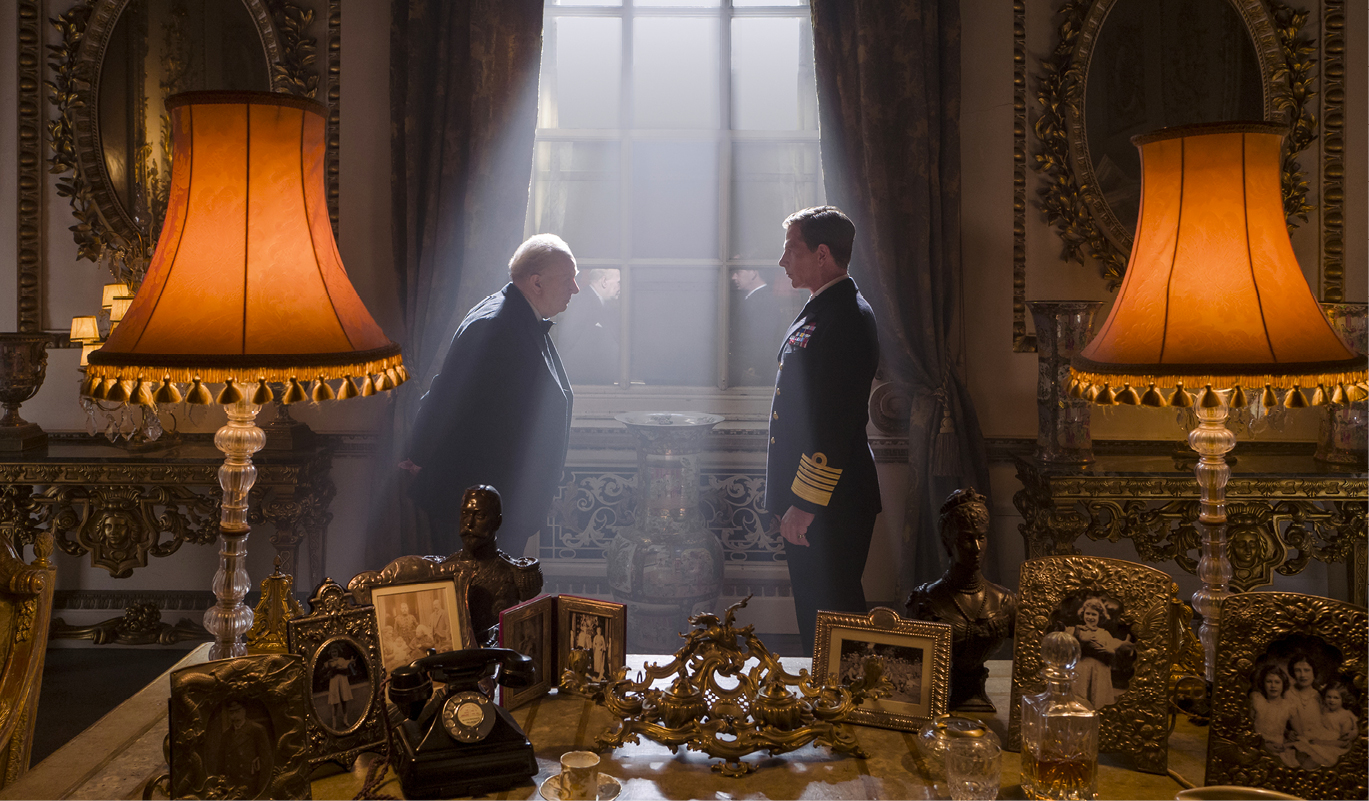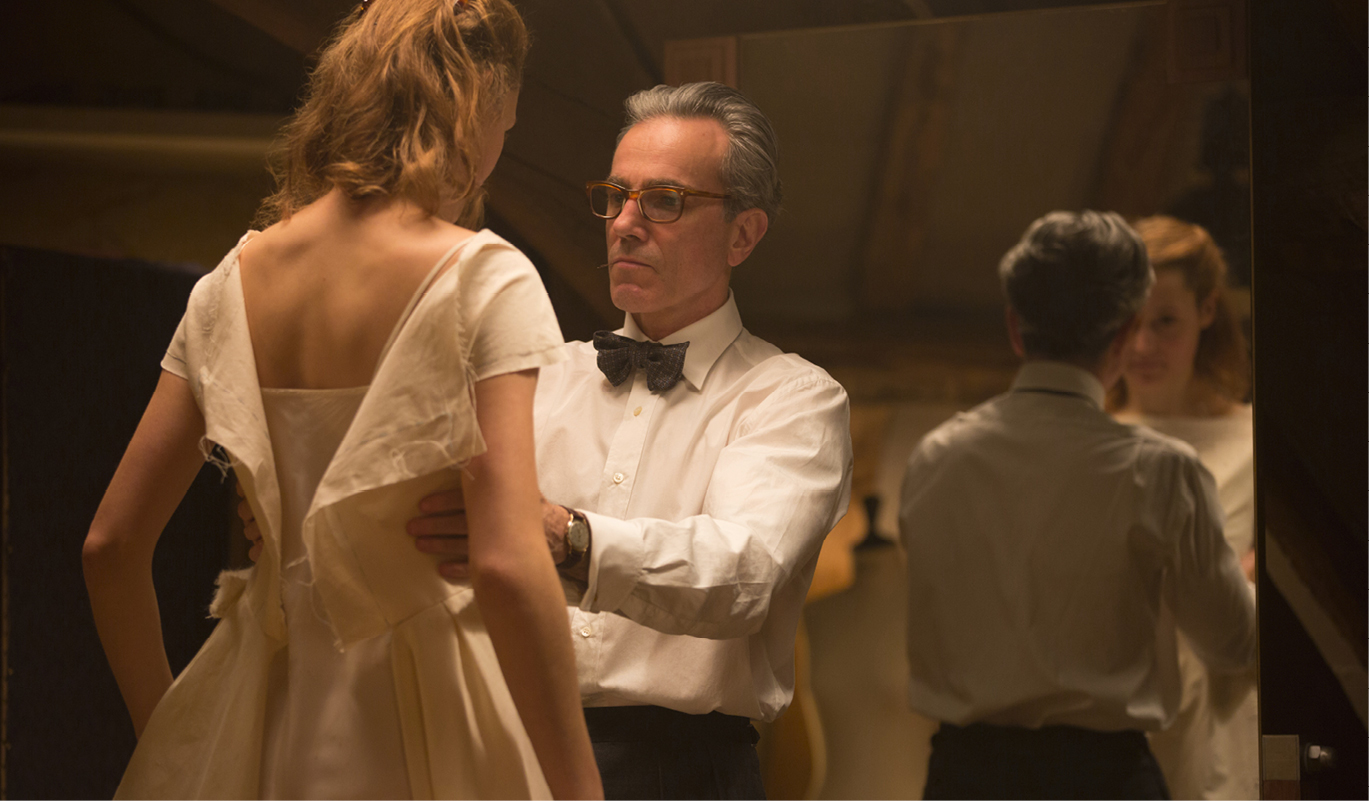Pictures in a Frame

The Shape of Water
At the Oscars, awards for achievements in production design, makeup and hairstyling, costume design and visual effects are often considered “technical awards,” implying that they are given to craftspeople rather than artists, and that the winners’ accomplishments are mainly about applied skill. But the best work in these categories contributes just as much to the artistic success of a movie as the more highly touted writing, directing, and acting do. At the 90th Annual Academy Awards Show in March, the design work which won awards was integral to the visions that the movies’ respective filmmakers brought to the screen, serving to bolster and deepen the narrative and character development.
It’s impossible to imagine Guillermo del Toro’s Best Picture-winning The Shape of Water without the immersive, authentic production design from Paul Denham Austerberry, which both evokes the specific historical time and place (Baltimore in 1962) and emulates the classic monster movies from which del Toro took his inspiration. Gary Oldman probably should have shared his Best Actor Oscar for Darkest Hour with the makeup team of Kazuhiro Tsuji, David Malinowski, and Lucy Sibbick, because without the extensive prosthetics they created for him, his performance as Winston Churchill wouldn’t have nearly the same power. As brilliant as Daniel Day-Lewis is as an actor, his fashion designer Reynolds Woodcock in Phantom Thread wouldn’t be remotely as convincing without the meticulous work of costume designer Mark Bridges, creating every design that Woodcock presents throughout the movie. And the visual effects in Blade Runner 2049 make up the bulk of the movie’s visual style, infusing every frame of Denis Villeneuve’s sci-fi epic.
In The Shape of Water, Oscar nominee Sally Hawkins plays Elisa Esposito, a mute woman who works as a cleaner at a secret government-funded lab. She endures treatment that ranges from indifference to abuse from most of her co-workers, especially the hard-nosed Colonel Strickland (Michael Shannon), who’s recently been brought in to run the place. Her only friend at work is fellow cleaner Zelda (Octavia Spencer, also Oscar-nominated), although she also has a close relationship with her neighbor Giles (Richard Jenkins), a closeted gay man who works as an advertising illustrator.
The sensitive, shy Elisa eventually forms another bond with the mysterious amphibious creature (played by veteran monster specialist Doug Jones) that her superiors have captured to study, and their unlikely love story forms the core of the movie. Given that neither Elisa nor the unnamed creature is able to speak, much of their connection is expressed through the movie’s visuals, of which the production design is a vital part. Despite Elisa, Zelda and their co-workers spending what seems to be a significant amount of time cleaning the facility, it looks perpetually dank and murky, almost literally dripping with menace. The room where the creature is being held evokes old-school Universal monster movies, and it wouldn’t be a surprise if Dr. Frankenstein were one of the scientists involved in the study.
Outside of the facility, Elisa lives in a well-worn apartment over a gorgeous classic movie theater, and she and Giles often get together to watch classic Hollywood musicals. Elisa’s penchant for movie-inspired fantasy (which, of course, mirrors del Toro’s own love of vintage cinema) is reflected in the design of the theater, which resembles the kind of movie palaces that are almost entirely extinct these days. The spaces are all reflective of the characters’ personalities and journeys, from the cozy apartments to the antiseptic diner where Giles makes an ill-advised pass at a waiter. The movie takes place in a real period in American history, but it also takes place in a sort of cinema-fueled dream world, and Austerberry’s production design captures both of those elements perfectly.

Darkest Hour
In Darkest Hour, Oldman undergoes a transformation nearly as extensive as Jones’ in The Shape of Water, rendering the acclaimed actor almost unrecognizable. Oldman is already a chameleon as a performer, and he’s disappeared under heavy makeup before, in roles including Count Dracula in Francis Ford Coppola’s adaptation of Bram Stoker’s novel, wizard Sirius Black in the Harry Potter films, deformed millionaire Mason Verger in Hannibal, villain Jean-Baptiste Emanuel Zorg in The Fifth Element, and many more. But Churchill may be his most extensive metamorphosis yet, all the more impressive because it involves becoming a real historical figure, not a fantastical creation.
Without the makeup team’s work, Oldman’s performance might just be empty bluster, given how Anthony McCarten’s script is filled with grandiose, bloviating speeches. But the actor’s altered physical presence makes that bluster more fitting, coming from a man whose very existence fills up a room. With his jowls, his gut, his hunched stature and his bald pate, the movie’s Churchill is as physically imposing as he is intellectually intimidating, which is clear from the very first scene in which he asserts his dominance over his new secretary (played by Lily James).
Churchill is also a hero who rallies a nation against the Axis powers during World War II, and Oldman puts his new physicality to use in a different way in a fictionalized scene in which Churchill takes the London subway and consults with average people about his course of action regarding the Germans. Here, the larger-than-life Churchill literally brings himself down to the level of the people, and it’s the contrast between his immense stature and his gentle demeanor that gives the scene its power (even if it’s also undeniably cheesy).

Phantom Thread
Day-Lewis plays an intimidating character of a different sort in Phantom Thread, which isn’t based on true events but often has the feel of a biopic. Set in 1954, it focuses on fashion designer Reynolds Woodcock and his complex relationships with his sister/business partner Cyril (Oscar nominee Lesley Manville) and his new, much younger girlfriend Alma (Vicky Krieps). From the beginning, characters are declaring Reynolds a genius; it’s clear that his fashion house is extremely successful and he’s in demand to design dresses for the most high-profile women in society. Every piece he creates has a deeply personal resonance, as he recounts to Alma when talking about his relationship with his late mother.
In designing costumes for Phantom Thread, Bridges wasn’t just designing outfits that members of London’s upper-class society might have worn in 1954. He was also creating pieces of art that might come from the mind, temperament and talent of Reynolds Woodcock himself, pieces that needed to express something important about the character, while also believably looking like 1950s fashion. Some online commentators have debated over whether Woodcock is actually a good fashion designer, or whether the work he creates in the movie is too fussy and constraining.
That debate only further demonstrates how strong Bridges’ work is, and how integral it is to the story that filmmaker Paul Thomas Anderson is telling. Fashionistas of the time would have had the exact same debate about Reynolds’ work, and making the film’s fashions controversial is a brilliant way of demonstrating Woodcock’s brash, sometimes abrasive personality via his creations.
While The Shape of Water, Darkest Hour and Phantom Thread are all period pieces, with actual historical design elements to draw upon, Blade Runner 2049 is set in the future, allowing the design team to let their imaginations run wild when it comes to creating the movie’s world. At the same time, 2049 is the sequel to the 1982 sci-fi classic Blade Runner, which has a very specific aesthetic that fans would be expecting to see replicated. The visual effects split the difference between nostalgia and innovation, relying on practical, tangible creations as much as modern CGI, delivering a look that is sleek and forward-thinking while also evocative of the franchise’s past.
Set 30 years after the events of Blade Runner, 2049 stars Ryan Gosling as K, a replicant (the name for human-like androids) who also works as a blade runner, a government agent tracking down and eliminating rogue replicants. A new case puts him on the trail of Rick Deckard (Harrison Ford), a former blade runner and the main character of the first movie, and places him at odds with the sinister corporation that creates and controls the replicants.
In addition to its visual effects, 2049 won an Oscar for the cinematography by legendary director of photography Roger Deakins. Pretty much every frame of the movie could be printed out and hung in a museum. Director Villeneuve preserves many of the striking visual elements of the original, including a Los Angeles overrun with giant, intrusive advertising, with now outdated brands like Atari and Pan Am, which appeared in the original, maintaining a presence.
Perhaps the most emotionally affecting use of effects comes in the character of Joi (Ana de Armas), a holographic companion who longs for more in her relationship with K. The scene in which Joi hires a replicant prostitute (Mackenize Davis) to serve as her avatar for sex with K is tender and heartbreaking, and the way that Davis and de Armas commingle and melt into each other seamlessly—thanks to sophisticated visual effects—is what gives those romantic moments their power. In all four of these movies, the design work transcends its “technical” designation to reach the audience in the same way that all good storytelling does.
